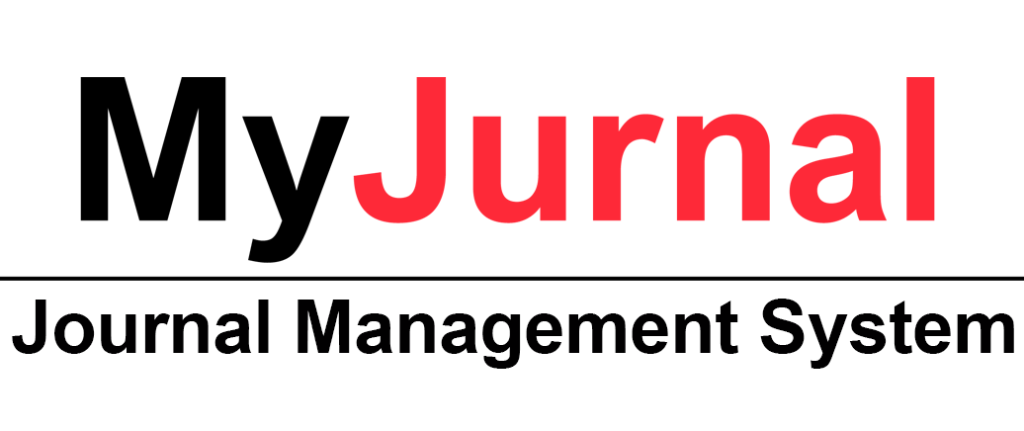The Effectiveness of Strategies Used by Teachers to Manage Disruptive Classroom Behaviors: A Case Study at a Religious School in Rawang, Selangor, Malaysia
DOI:
https://doi.org/10.31436/ijes.v4i1.87الملخص
Studies have indicated that there is a positive correlation between disruptive behaviors and low academic achievement which resulted in other problems such as absenteeism, school drop-out and delinquent behaviors. Lack of knowledge and skills and failure in managing classroom disruptive behaviors have caused frustration, stress and burnout among teachers which pushed teachers to leave the profession especially novice teachers. The pervasiveness of classroom disruptive behaviors implied that strategies employed by teachers to manage disruptive behaviors are not effective. This requires immediate attention and action to find effective solutions. Therefore, this exploratory study attempts to discover the common classroom disruptive behaviors; to identify strategies used by teachers in managing misbehaviors; and to find out to what extent the strategies used by teachers were actually effective in managing classroom disruptive behaviors. This is especially critical in religious schools since the majority of teachers teaching in religious schools in the state of Selangor had no formal training in education; and they were not trained in classroom management, thus have no exposure on handling student classroom disruptive behaviors. Participants of this study were 14 teachers from a religious school in the district of Rawang, Selangor. Data collected using self-constructed instrument and semi-structured interviews were analyzed using descriptive statistics and qualitative analysis. Findings of this study revealed that majority of classroom disruptive behaviors were low-level disruptions; nonetheless they were burdensome to teachers which led to teacher frustration. Majority of teachers used ineffective punitive measures to handle student misbehaviors. Implications from the study were discussed.
المقاييس
المراجع
Arbuckle, C. & Little, E. (2004). ‘Teachers’ perceptions and management of classroom disruptive behavior during the middle years (year five to nine),’ Australian Journal of Educational and Developmental Psychology, 4, 59-70.
Australian Education Union (2008) New Educators Survey 2008, Result and Report.
Barret, E. R., & Davis, S. (1995). Perceptions of beginning teachers’ needs in classroom management. Teacher Education and Practice, 11, 22-27.
Beaman, R., Wheldall, K., & Kemp, C. (2007). ‘Recent research on troublesome classroom behavior: A review,’ Australasian Journal of Special Education, 31(1), 45-60.
Bowen, J., Jensen, W., & Clark, E. (2004) School based intervention for students with behavior problems, New York: Kluwer.
Brackett, M. A., Reyes, M. R. Rivers, S. E., Elbertson, N. A., & Salovey, P. (2011). ‘Classroom emotional climate, teacher affiliation and student conduct,’ Journal of Classroom Interaction, 46(1), 27-36.
Bradshaw, C. P., Schaeffer, C. M., Petras, H., & Ialongo, N. (2010). ‘Predicting negative life outcomes from early aggressive–disruptive behavior trajectories: Gender differences in maladaptation across life domains,’ Journal of Youth and Adolescence, 39 (8), 953-966.
Brown, E. C., Catalano, R. F., Fleming, C. B., Haggerty, K. P., & Abbott, R. D. (2005). ‘Adolescent substance use outcomes in the Raising Healthy Children Project: A two part latent growth curve analysis,’ Journal of Consulting and Clinical Psychology, 73, 699-710.
Caspi, A., Moffitt, T. E., Newman, D. L., & Silva, P. A. (1996). ‘Behavioral observation at age 3 years predict adult psychiatric disorder: Longitudinal evidence from a birth cohort,’ Archives of General Psychiatry, 53, 1033-1039.
Cholewa, B., Smith-Adcock, S., & Amatea, E. (2010). ‘Decreasing elementary school children’s disruptive behaviors: A review of four evidence-based programs for school counselors,’ Journal of School Counseling, 8(4), 1-34.
Clunies-Ross, P., Little, E., & Kienhuis, M. (2008). ‘Self-reported and actual use of proactive and reactive classroom management strategies and their relationship with teacher stress and student behavior,’ Eduactional Psychology, 28, 693-710.
Conduct Problem Prevention Research Group. (1999). ‘Initial impact of the Fast Track prevention trial for conduct problem: 1. The high-risk sample,’ Journal Consulting and Clinical Psychology, 67, 631-647.
Conduct Problem Prevention Research Group. (2002). ‘Evaluation of the first 3 years of the fast Track prevention trial with children at high risk for adolescent conduct problems,’ Journal of Abnormal Child Psychology, 30, 19-35.
Conroy, M. A., Sutherland, K. S., Vo, A. K., Carrs, & Ogston, P. L. (2013). ‘Early childhood teachers’ use of effective instructional practices and the collateral effects on young children behavior,’ Journal of Positive Behavior Interventions, 20(10), 1-12.
Donaldson, J. M., Vollmer, T. R., Krous, T., Downs, S., & Berard, K. P. (2011). ‘An evaluation of the good behavior game in kindergarten classrooms,’ J Appl Behav Anal., 44(3), 605-609.
Dorman, J. (2003). ‘Testing a model for teacher burnout,’ Australian Journal of Educational & Developmental Psychology, 3, 35-47.
Duck, C. (2007). ‘Using sounder foundation to help avoid the “why new teacher cry” phenomenon,’ The Clearing House, 81(1), 29-36.
Evertson, C. M. & Weistein, C. S. (2006) Handbook of classroom management: Research, practice, and contemporary issues, Mahwah, NJ: Lawrence Erlbaum Associates.
Finn, J.D., Fish, R. M., & Scott, L. A. (2008). ‘Educational sequelae of high school misbehavior,’ The Journal of Educational Research, 101(5), 259-274.
Friedman, I. A. (2006) ‘Classroom management and teacher stress and burnout’, In C.M. Evertson & C. S. Weistein (Eds.), Handbook of classroom management: Research, practice, and contemporary issues, Mahwah, NJ: Lawrence Erlbaum Associates.
Freiberg, H. S., Huzinec, C., & Templeton, S. M. (2009). ‘Classroom management-A pathway to student achievement,’ Elementary School Journal, 110(1), 64-80.
Gable, R., Hester, P., Rock, M., & Hughes, K. (2009). ‘Back to basics: Rules, praise, ignoring, and reprimand revisited,’ Intervention in School and Clinic, 44, 195-205.
Gonzales, L., Brown, M. S., & Slate, J. R. (2008). ‘Teachers who left the teaching profession: A qualitative understanding,’ The Qualitative Report, 13(1), 1-11.
Guardina, C. A., & Fullerton, E. (2010). ‘Changing behaviors by changing the classroom environment,’ Teaching Exceptional Children, 42(6), 8-13.
Gutierrez, F. C., & Shoemaker, D. J. (2008). ‘Self-reported delinquency of high school students in Metro Manila: Gender and social class,’ Youth and Society, 40(1), 55-85.
Hawkins, J. D., Catalano, R. S., Kosterman, R., Abbott, R., & Hill, K. G. (1999). ‘Preventing adolescent health risk behaviors by strengthening protection during childhood,’ Archives of Pediatrics and Adolescent Medicine, 153, 226-234.
Hawkins, J. D. Kosterman, R., Catalano, R. Hill, K. G., & Abbott, R. (2005). ‘Promoting positif adult functioning through social development intervention in childhood: Long term effect from the Seattle Social Development Project,’ Archives of Pediatric and Adolescent Medicine, 159, 25-31.
Henly, M. (2010) Classroom management: A proactive approach, Upper Saddle River, NJ: Pearson.
Kellam, S. G., Brown, C. H., Poduska, J. M., Ialongo, N. S., Wang, W., & Toyinbo, P. (2008). ‘Effects of a universal classroom behavior management program in first and second grades on young adult behavior, psychiatric, and social outcomes,’ Drug and Alcohol Dependence, 95S, S5-S28.
Kellam, S. G., Mackenzie, A.C., Poduska, J. M., Wang, W., Petras, H., & Wilcox, H. C. (20011). ‘The Good Behavior Game and the future of prevention and treatment,’ Addiction Science & Clinical Practice, July, 73-84.
Kerr, M. M. & Nelson, C. M. (2010) Strategies for addressing behavior problems in the classroom, Upper Saddle River, NJ: Pearson.
Kohn, A. (2006) Beyond discipline: From compliance to community, Alexandria, VA: Association for Supervision and Curriculum Development.
Kokkinos, C. (2007). ‘Job stressors, personality and burnout in primary school teachers,’ British Journal of Educational Psychology, 77, 229-243.
Kunter, M., Baumert, J., & Koller, P. (2007). ‘Effective classroom management and the development of subject-related interest,’ Learning and Instruction, 17, 494-509.
Leflot, G., van Lier, A. C., Onghena, P., & Colpin, H. (2010). ‘The role of teacher behavior management in the development of disruptive behaviors: An intervention study with the Good Behavior Game,’ Journal of Abnormal Child Psychology, 38(6), 869-882.
Loeber, R., Farrington, D.P., Stouthamer-Loeber, M., Moffitt, T.E., & Caspi, A. (1998). ‘The development of male offending: Key findings from the first decade of Pittsburg youth study,’ Studies of Crime and Prevention, 7, 1-31.
Madsen, C. H., Becker, W. C. & Thomas, D. R. (2001). ‘Rules, praise, and ignoring: Elements of elementary classroom control,’ Journal of Direct Instruction, 1(1), 11-25.
Maguire, M. Ball, S., & Braun, A. (2010). ‘Behavior, classroom management and student control. Enacting policy in English secondary school,’ International Studies in Sociology of Education, 20(2), 153-170.
Marzano, R., & Marzano, J. S. (2003). ‘The key to classroom management,’ Educational Leadership, 61(1), 6-13.
Meister, D. G., & Melnick, S. A. (2003). ‘National new teacher study: Beginning teachers’ concerns,’ Action in Teacher Education, 24(4), 87-94.
Morrison, G., Anthony, S., Storino, M., & Dillon, C. (2001). ‘An examination of the disciplinary histories and the individual and educational characteristics of students who participate in an in-school suspension program,’ Education and Treatment of Children, 24, 276-293.
Patterson, G., Reid, J., & Dishion, T. (1992) Antisocial boys: A social interactional approach (Vol. 4), Eugene, OR: Castalia Publishing.
Pierce, E. W., Ewing, L. J., & Campbell, S. B. (1999). ‘Diagnostic status and symptomatic behavior of hard-to-manage preschool children in middle childhood and early adolescence,’ Journal of Clinical Child Psychology, 28, 44–57.
Pisacreta, J., Tincani, M., Connell, J. E., & Axelrod, S. (2011). ‘Increasing teachers’ use of 1:1 praise to behavior correction ratio to decrease student disruption in general education classrooms,’ Behavioral Interventions, 26, 243-260.
Raby, R. (2010) ‘The intraccies of power relations in discourses of secondary school discipline strategies’ In Z. Millei, T.G. Griffiths & R.J. Parkes (Eds.), Re-theorizing discipline in education: Problems, politics and possibilities, New York: Peter Lang Publishing Inc.
Rinke, W. M., & Herman, K. C. (2002). ‘Creating school environment that deter antisocial behaviors in youth,’ Psychology in the Schools, 39(5), 549-559.
Reinke, W. M., Stormont, M, Herman, K. C., Puri, R., & Goel, N. (2011). ‘Supporting children’s mental health in school: Teacher perceptions of needs, roles, and barriers,’ School Psychology Quarterly, 26, 1-13.
Rosnani Hashim. (2004) ‘Education dualism in Malaysia: Implications for theory and practice’, Kuala Lumpur: The Other Press.
Scott, S., Spender, Q., Doolan, M., Jacobs, B., & Aspland, H. (2001). ‘Multicenter controlled trial of parenting groups for child antisocial behavior in clinical practice,’ British Medical Journal, 323, 1-5.
Slee, R. (1995) ‘Changing theories and practices’, London: The Falmer Press.
Smith, D. L. & Smith, B. J. (2006). ‘Perceptions of violence: The views of teachers who left urban schools,’ The High School Journal, 89, 34-42.
Soodak, L.C. (2003). ‘Classroom management in inclusive settings,’ Theory into Practice, 42(4), 327-333.
Sullivan, A.M., Johnson, B., Owens, L., & Conway, R. (2014). ‘Punish or engage them? Teachers’ views of unproductive student behaviors in the classroom,’ Australian Journal of Teacher Education, 9(6), 43-57.
Sun, R. C. F. & Shek, D. T. L. (2012). ‘Student classroom misbehavior: An exploratory study based on teachers’ perceptions,’ The Scientific World Journal, 2012, 1-7.
Sutton, R., & Wheatley, K. (2003). ‘Teachers’ emotions and teaching: A review of the literature and directions for future research,’ Educational Psychology Review, 15, 327-358.
Stearns, E., & Glennie, E. (2006). ‘When and why drop out leave school,’ Youth and Society, 38, 29-57.
Stoughton, E. H. (2007). ‘“How will I get them to behave?” Pre-service teacher reflects on classroom management,’ Teacher and Teacher Education, 23, 1024-1037.
Thomas, Bierman, Powers, & The Conduct Problems Prevention Research Group. (2011). ‘The influence of classroom aggression and classroom climate on aggressive-disruptive behavior,’ Child Development, 82(3), 751-757.
Thompson, B. (2009). ‘Disruptive behaviors in Barbadian Classroom: Implication for universal secondary education in the Caribbean,’ Journal of Eastern Caribbean Studies, 34(3), 39-58.
Travers, C. (2001) ‘Stress in teaching’, In J. Dunham (ed.) Stress in the workplace: past, present and future, London: Whurr.
Wakschlag, L., Leventhal, B., Briggs-Gowen, M., Danis, B., Keenan, K., & Hill, C. (2005). ‘Defining the ‘disruptive’ in preschool behavior: What diagnostic observation can teach us,’ Clinical Child and Family Psychology Review, 8, 183-201.
Walker, H. M., Ramsey, E., & Gresham, F. (2004) Antisocial behavior in school: Evidence-based practices, Thomson Wadsworth Publisher.
Wan Mazwati Wan Yusoff. (2012). ‘Impact of Prophet Muhammad Motivation Techniques on Students’ Performance,’ The Procedia-Social and Behavioral, 69, 1700-1708.
Way, S. M. (2011). ‘School discipline and disruptive classroom behavior: The moderating effects of student perceptions,’ The Sociological Quarterly, 52, 346-375.
Webster-Stratton, C. & Reid, M. J. (2004). ‘Strengthening social and emotional competence in young children-the foundation in early school readiness and success: Incredible years classroom social skills and problem solving curriculum,’ Journal of Infant and Young Children, 17, 96-113.
Webster-Stratton, C. & Hammond, M. (1997). ‘Treating children with early-onset conduct problems: A comparison of child and parent training interventions,’ Journal of Consulting and Clinical Psychology, 65, 93-109.
Wheeler, J. J. & Richey, D. D. (2010) Behavior management: Principles and practices of positive behavior supports (2nd edn.), Upper Saddle NJ: Pearson.
Yahyazadeh Jeloudar & Aida Suraya Md Yunus, (2011). ‘Teacher social intelligence and classroom discipline strategies,’ International Journal of Psychological Studies, 3(2), 149-156.
Zyngier, D. (2007). ‘Listening to teachers-listening to students: Substantive conversations about resistance, empowerment and engagement,’ Teachers and Teaching: Theory and Practice, 13(4), 327-347.
التنزيلات
الملفات الإضافية
منشور
كيفية الاقتباس
إصدار
القسم
الرخصة
The Journal will own copyright to all published works and have the right of first publication, both in print and online, unless other arrangements are made with the Editors in advance. It is the author`s responsibility to ensure that where copyright materials are included within an article the permission of the copyright holder has been obtained beforehand.




















